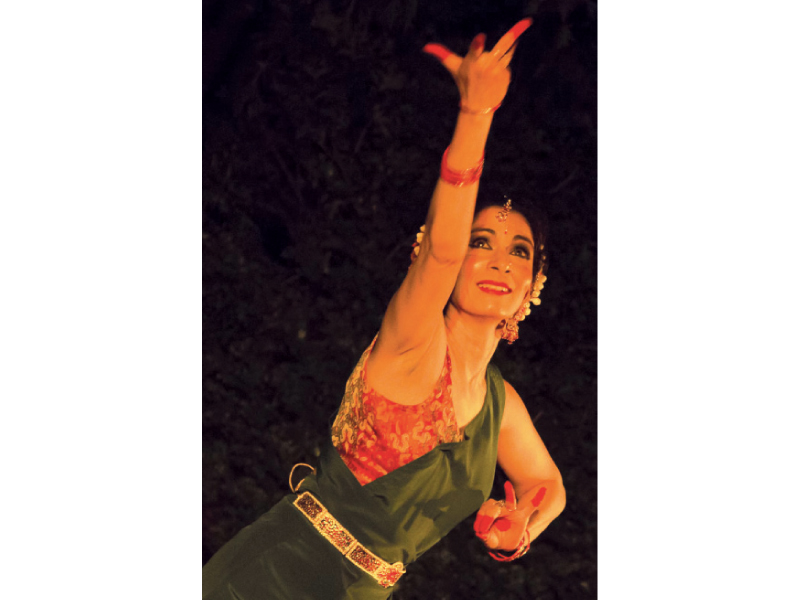
Classical dancer Tehreema Mitha, whose career spans nearly three decades, presented an interactive lecture and performed the Indian dance form, bharatnatyam at Kuch Khaas on Tuesday evening.
“All classical dance forms in the Indian subcontinent come from the temples because the oldest religion was Hinduism so that is part of our history,” said Tehreema. “Our question is what do you do with it? Can the classical dance stay within a specific format or can it be taken from there?”
Bharatnatyam, she believes, can be taken forward since it is an anagram. Sharing the etymology of the word, she explained “Bha” means “bhaav” (expression), “ra” is raag (rhythm) and “natyam” (drama), because without drama, she said, there is nothing to put on stage.
Demonstrating the three basic positions of the dance form, she showed how it was different from kathak. “Those of you who are used to kathak would be used to something much smoother, more constrained in the use of space and much more upright.”
Unlike in Western dances, classical dancers lean forward so the eyes are wide open and the viewer can see the expression in the eyes.
“Like ballet dancers have their specific shoes, we are very fond of our ghungroos and don’t like to share them too much,” she said on a lighter note.
Usually the classical dancers wear up to 45 on either foot. “You need to be very clear with your foot fall and that should be enough,” said Tehreema, implying more ghungroos won’t necessarily enhance the sound or the performance.
The dance form is rooted in Hindu mythology. “My mother, Indu Mitha, started the tradition and I’ve kept it alive and worked to incorporate other themes into it,” she said.
One such theme “Rutt malhaar ki reet” is about the rainy season when the peacocks dance. But in most mythologies, it’s always the male.
“We forget all about the peahen to the extent that there are no mudras, no finger movement signifying the peahen and there are no songs to her, so we thought it was time.”
She presented snippets of the dance with graceful relays of the movement of the peahen.
Tehreema also highlighted the three distinct moods that can go with the same song, using the same words. These range from indignation, flirtatiousness and aggression to win the beloved’s adoration.
The Kuch Khaas Group, which attended a 12-day workshop with Tehreema, presented a classical-meets-contemporary dance which will ultimately be compiled in a video in collaboration with the musician Arieb Azhar.
The dancers comprise three of Indu’s students, Amna Mawaz Khan and Feryal Amal Aslam, Iftikhar Masih and two dance instructors Faizaan Ahab and Jasmine Arandia.
My first solo performance was in Lahore in 1986. At the time there were restrictions on where we could perform in Pakistan, so the Quetta Institute, Lahore was kind enough to give us their veranda and the guests sat in the lawn, said Tehreema.
The two-day performances that attracted over 350 people, was the beginning. “I wanted to move into contemporary work because there are some things you just can’t convey in classical dance and I needed to move forward.”
Her first contemporary dance was “Why” based on Shah Abdul Latif Bhittai’s melody. It’s a dance of bereavement performed by somebody who is mad with grief. She sees her beloved but later realises it is a hallucination and breaks down.
Tehreema also screened some videos of classical dance performed by people from different ethnicities for her company in the US.
Published in The Express Tribune, May 22nd, 2014.

1725877703-0/Tribune-Pic-(5)1725877703-0-165x106.webp)



1726722687-0/Express-Tribune-Web-(9)1726722687-0-270x192.webp)











COMMENTS
Comments are moderated and generally will be posted if they are on-topic and not abusive.
For more information, please see our Comments FAQ